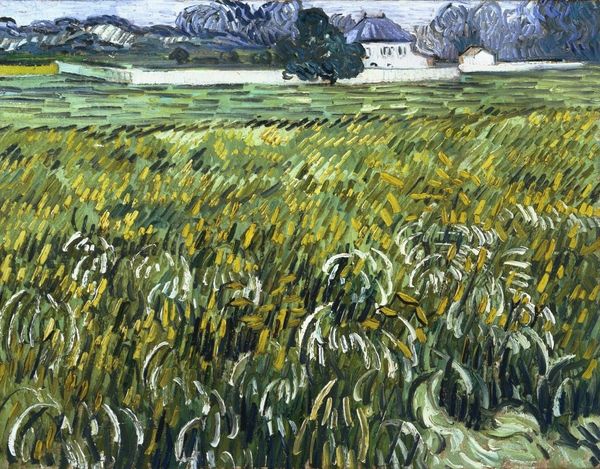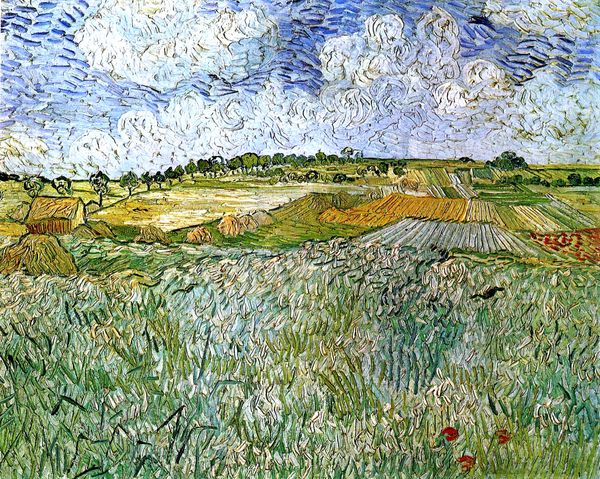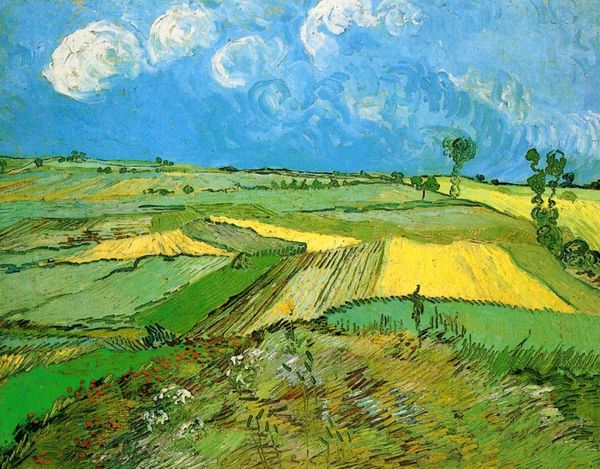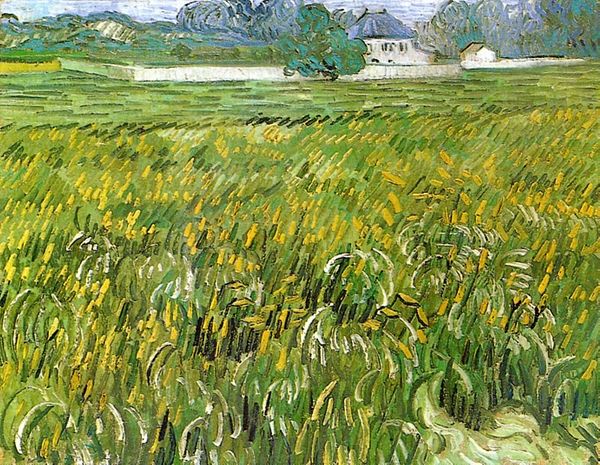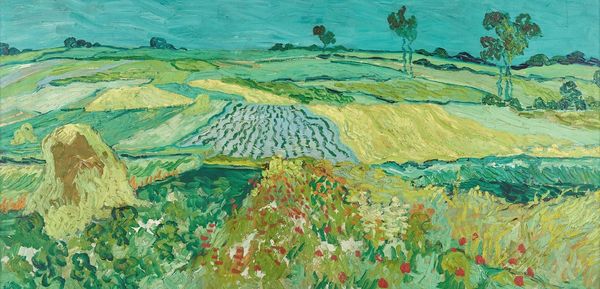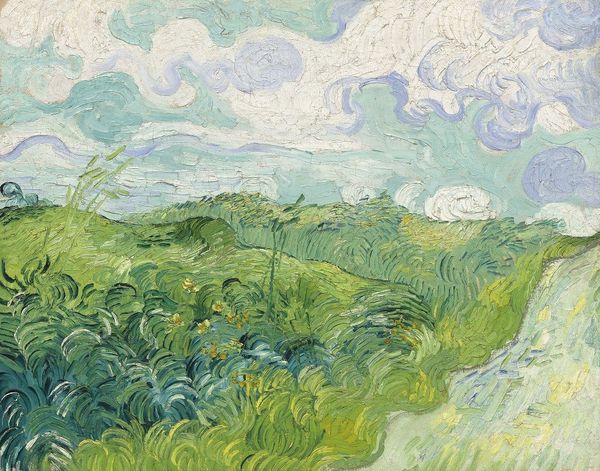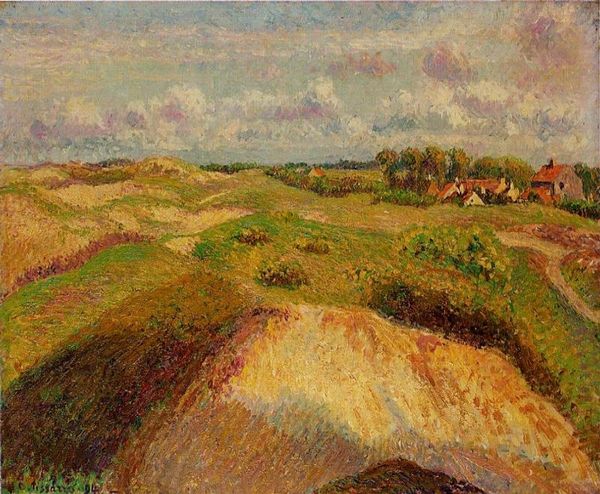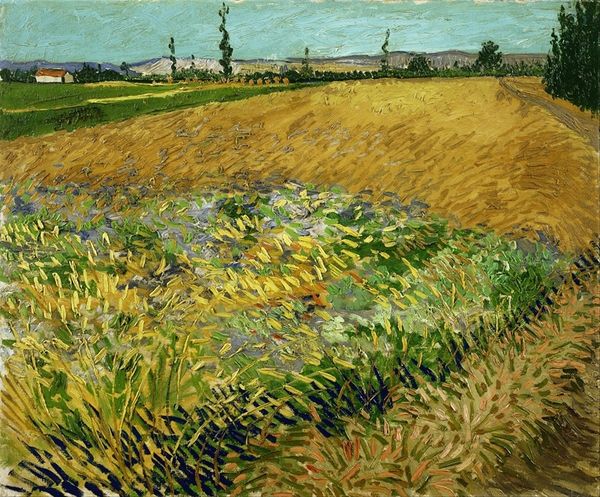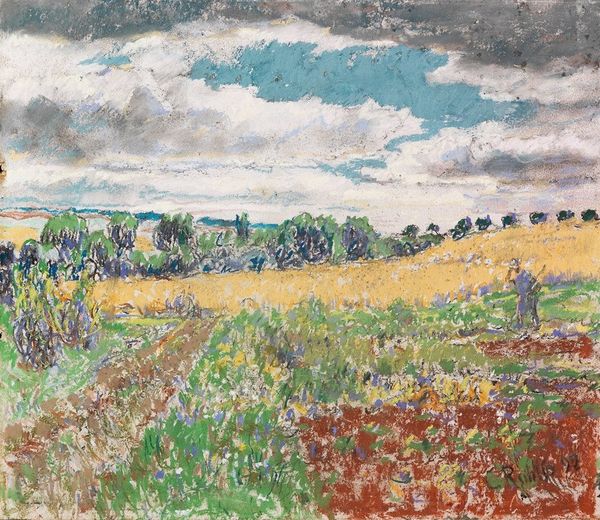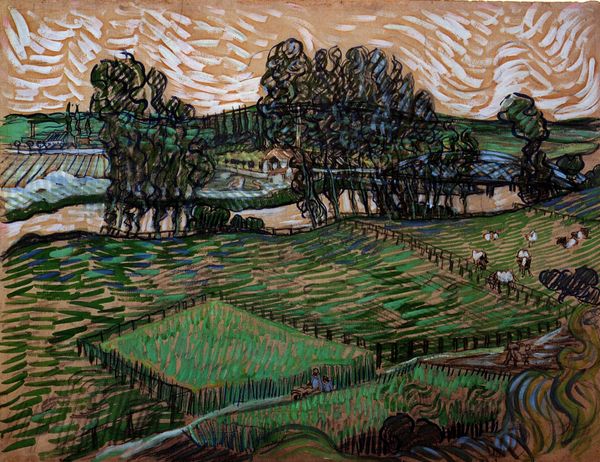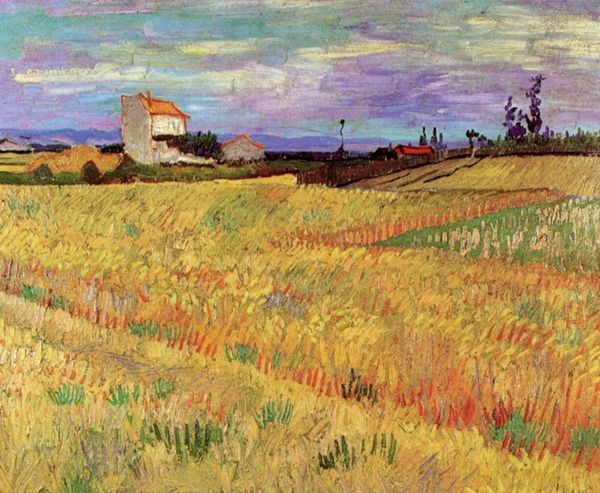
painting, plein-air, oil-paint, impasto
#
painting
#
plein-air
#
oil-paint
#
landscape
#
impressionist landscape
#
impasto
#
post-impressionism
Copyright: Public domain
This landscape was painted by Vincent van Gogh, likely in the late 1800s, capturing the fields near Auvers. The wheat field, a dominant motif, evokes a sense of growth and abundance, but also hints at the cycle of life and death. Wheat as a symbol has ancient roots, linked to fertility and harvest deities in various cultures, like Demeter in ancient Greece. This association persists in Christian symbolism where wheat represents the bread of life and spiritual nourishment. Van Gogh’s swirling brushstrokes imbue the field with an almost restless energy, perhaps reflecting his own internal turmoil. The field, therefore, becomes a projection of the artist's psychological state, a mirror reflecting his anxieties. The image’s repetitive patterns and vibrant colors could tap into a collective memory of pastoral ideals, yet its frenetic execution introduces a modern sense of unease. Van Gogh’s wheat field is not merely an observation of nature, but a deeply personal and emotionally charged landscape that resonates with subconscious depths.
Comments
No comments
Be the first to comment and join the conversation on the ultimate creative platform.
